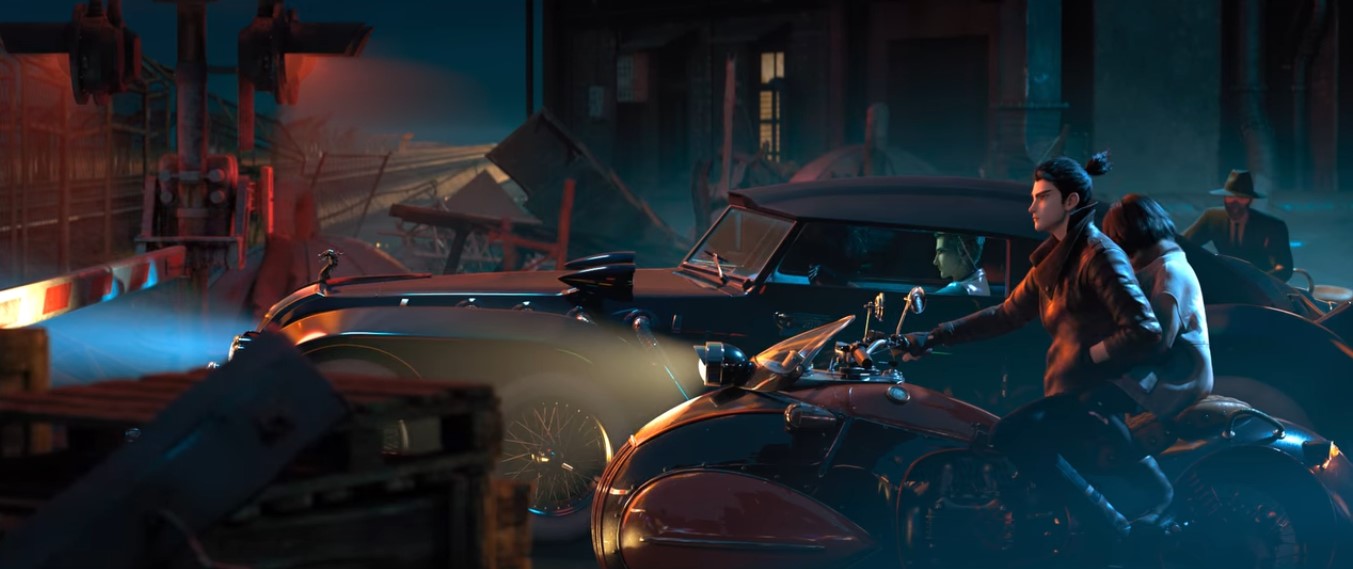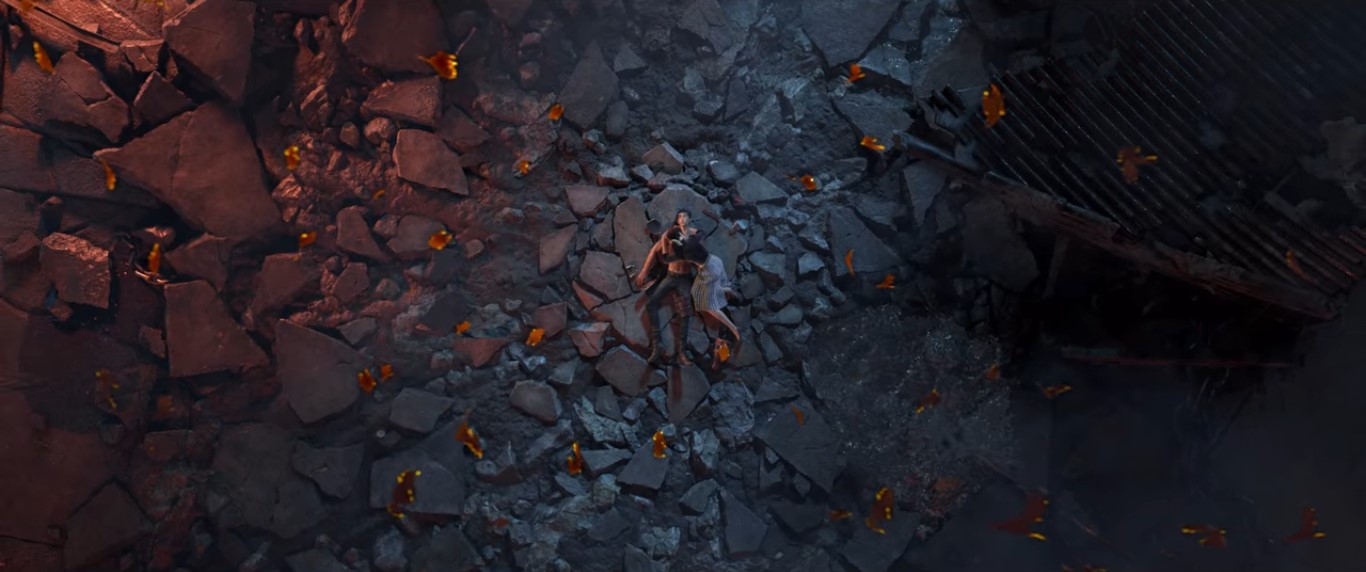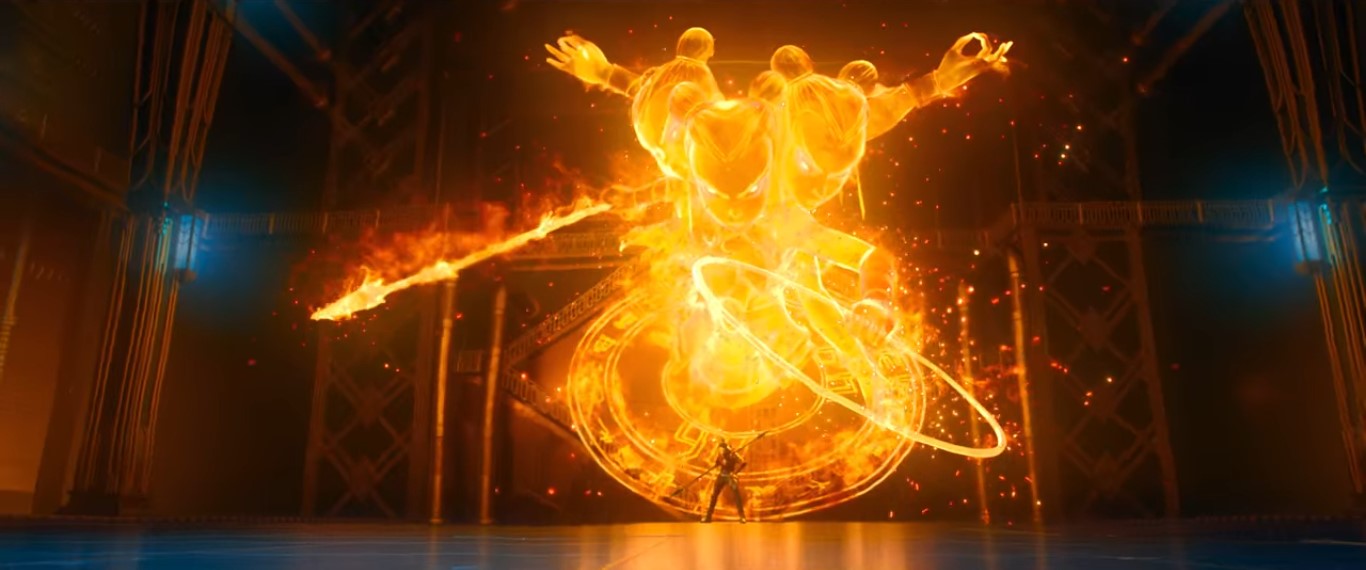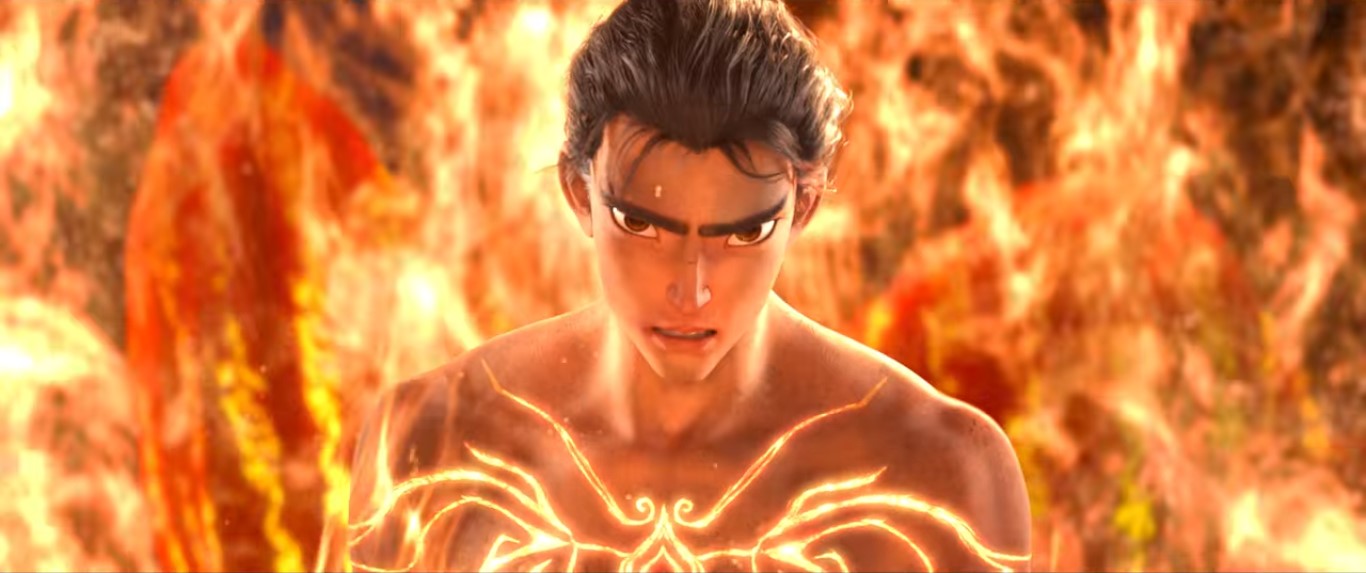Helmed by Chinese director Ji Zhao, ‘New Gods: Nezha Reborn’ is a visceral, adrenaline-filled animated action-adventure film that gives a stylistic steampunk makeover to the age-old Chinese mythological pantheon. Loosely based on the eponymous rebel figure of Nezha from the shenmo (the classic subgenre that dabbles in legends of demons and gods) ‘Investiture of the Gods’ (Chinese: ‘Fengshen Yanyi’) by Xu Zhonglin and Lu Xixing, the story revolves around an angry, young man, Li Yunxiang, and his divine predispositions.
Li conceals the power of a mythical ancestor, Nezha. As the city of Donghai, bereft of water, struggles to bring order into chaos, the hero must rise to the occasion and deliver justice to the people of the city. Awe-inspiring and spectacular in its epic scale, the film is the recent-most in a line of Chinese animations that seek to revive the classic tale of the birth of celestial creatures but departs from them in its modern setting. The ending of the film packs a lot of action within a short span of time as the hero collides with the boss villain, only to come full circle at the end. However, you may still have some lingering questions, and if you do, we may be able to decode the ending of ‘New Gods: Nezha Reborn’ for you. SPOILERS AHEAD.
New Gods: Nezha Reborn Plot Synopsis
The story opens in the fictional cyberpunk city of Donghai, which seems to be a Manhattan-meets-Shanghai metropolis. The city has run out of water. We are presented with a myth that contextualizes the story in its current setting. 3,000 years ago (supposedly during the Shang dynasty of the original chronicle), gods and humans clashed under the blackened sky as chaos descended on the mortal world.
From the chaos emerged gods of the new order. Under a new celestial order, the gods attained positions of supremacy and kept the human world under submission. In contemporary times, the divinity-ordained De, Li, Song, and Shun families control much of the city, but they are cautious of their age-old enmity with Nezha, the fierce sea-splitter, savior deity who possesses the element of fire.

The present-day saga begins with a young motorist named Li Yunxiang, who races with another (who is later revealed to be Doctor Su). Li wins the race and is congratulated by his goofy admirer, Kasha. In the daytime, Li works as a shady delivery agent, and by night, Li is a rogue renegade hero who breaks the Sluice gate at the water factory and returns the water to its rightful owners, the citizen.
Li and Kasha go to meet Li’s family, and on their way, they get apprehended by the third son of the De dynasty, Ao Bing (the Third Dragon Prince), who wants Li’s mod bike at any cost. At a later scene, the thugs, led by the Third Prince, corner Li and Kasha. Before Li can engage in any form of defense, the Third Prince summons his presiding deity, an icy dragon, who wreaks havoc on the pair, and Kasha gets irreparably damaged.
However, just in time, Li’s anger gives way to the unveiling of a prophesied power yet unknown to him. Now, with his newfound power, he must protect his family, defeat the East Sea Dragon King, and return the city to its previous state, all this while finding the perfect zen balance to manoeuver the limitless power that lies in him.
New Gods: Nezha Reborn Ending: Is Li Dead or Alive?
In the original Chinese myth, Nezha’s rage did not spare his brother, but it was finally contained by Wenshu Guangfa Tianzun. In the film, when Li visits the palace of the Dragon King, the deity Sasha (a disciple of Demoness Shiji, we are told) tries to derail Li by reiterating the mythical origin story. After a furious battle, Li decides to spare Sasha’s life and distances himself from the cruel deity Nezha in the process. We have previously known how much Li loves his family, and it is evident that Li and Nezha are different.

The Monkey King tells Li that he is too weak to claim the spirit of Nezha, that he is empathetically driven to cause good and not unleash chaos. Before Li descends the vortex that leads him to the submerged palace of the Dragon King, he tells Nezha that he does not need the deity’s help. In the final combat scene with the Dragon King and Sasha, Li defeats the enemy but loses his armor of containment and much of his strength. However, as Li lays unconscious in the ground and Su desperately tries to wake him up, the deity emerges in its full glory and heals Li.
We see Li getting revived in a lotus of fire and Nezha reassembling his armor. The tsunami recedes, and when Li heroically emerges before the Six Eared Macaque in the final moment, we see the ribbon in his hand, which is supposed to be the mythical Red Armillary Sash that is often depicted in Nezha’s arms. In all probability, Nezha is alive, and when the hero whispers in the ear of the Monkey King that he is Nezha, we are sure that both Li and Nezha live to fight another battle for the greater good of humanity. A sequel is imminent, it seems.
Is Nezha a God?
Yes, Nezha is a god in the Chinese mythological cosmos. Conceived to be a protection deity in Chinese folk belief, Nezha often takes the innocent child form in cultural depictions. According to ‘Investiture of the Gods,’ Nezha was born in the family of an army general Li Jing, who served the Shang dynasty. After slaying the third son of the Dragon Family (Ao Bing), Nezha committed suicide in a decision to save his family, only to be reincarnated as a rebel god.

Upon further investigation, the mythical character is found to have its origins in the Hindu pantheon. According to scholars, the yaksha named Nalakubar (mentioned in Ramayana) and the deity Krishna are thought to be the basis of the child god. According to a theory, Nalakubar was adapted into the Buddhist mythos under various names like Naluojiupoluo, Naluojubaluo, and Nazhajuwaluo before getting his present nomenclature of Nazha or Nezha.
Also, like Krishna, Nezha defeats mischievous kings, and while Krishna tames the serpent Kaliya, Nezha ascends to the occasion to assail the reptile-like Li Gen. In any case, Nezha is depicted in the film as a three-headed kid (following the traditional depictions) but departs from the original myth to create a fresh narrative that keeps the audience engaged, even those who don’t know much about the fabled deity.
Read More: Best Steampunk Films of All Time


You must be logged in to post a comment.